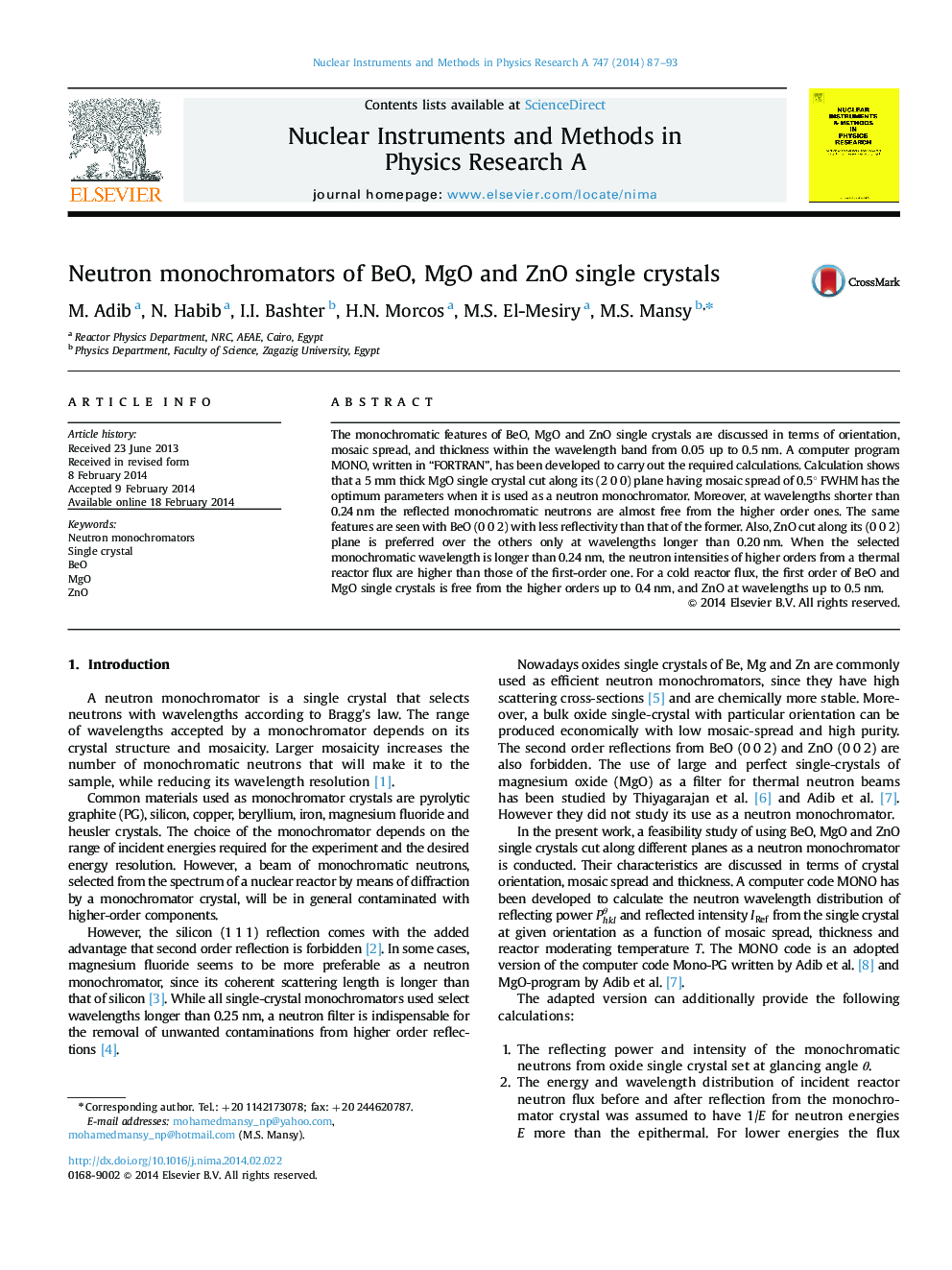| Article ID | Journal | Published Year | Pages | File Type |
|---|---|---|---|---|
| 8176447 | Nuclear Instruments and Methods in Physics Research Section A: Accelerators, Spectrometers, Detectors and Associated Equipment | 2014 | 7 Pages |
Abstract
The monochromatic features of BeO, MgO and ZnO single crystals are discussed in terms of orientation, mosaic spread, and thickness within the wavelength band from 0.05 up to 0.5 nm. A computer program MONO, written in “FORTRAN”, has been developed to carry out the required calculations. Calculation shows that a 5 mm thick MgO single crystal cut along its (2 0 0) plane having mosaic spread of 0.5° FWHM has the optimum parameters when it is used as a neutron monochromator. Moreover, at wavelengths shorter than 0.24 nm the reflected monochromatic neutrons are almost free from the higher order ones. The same features are seen with BeO (0 0 2) with less reflectivity than that of the former. Also, ZnO cut along its (0 0 2) plane is preferred over the others only at wavelengths longer than 0.20 nm. When the selected monochromatic wavelength is longer than 0.24 nm, the neutron intensities of higher orders from a thermal reactor flux are higher than those of the first-order one. For a cold reactor flux, the first order of BeO and MgO single crystals is free from the higher orders up to 0.4 nm, and ZnO at wavelengths up to 0.5 nm.
Related Topics
Physical Sciences and Engineering
Physics and Astronomy
Instrumentation
Authors
M. Adib, N. Habib, I.I. Bashter, H.N. Morcos, M.S. El-Mesiry, M.S. Mansy,
